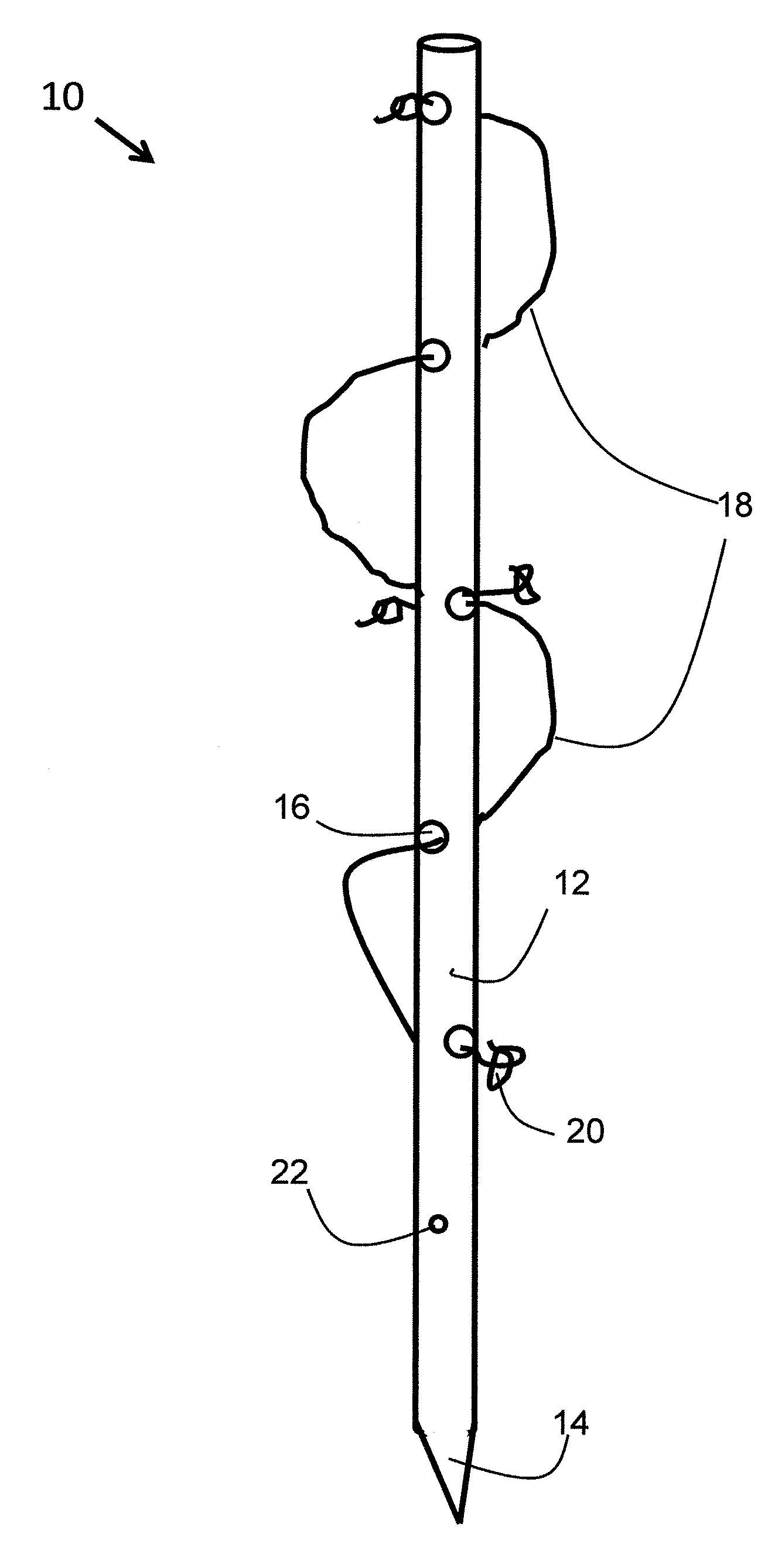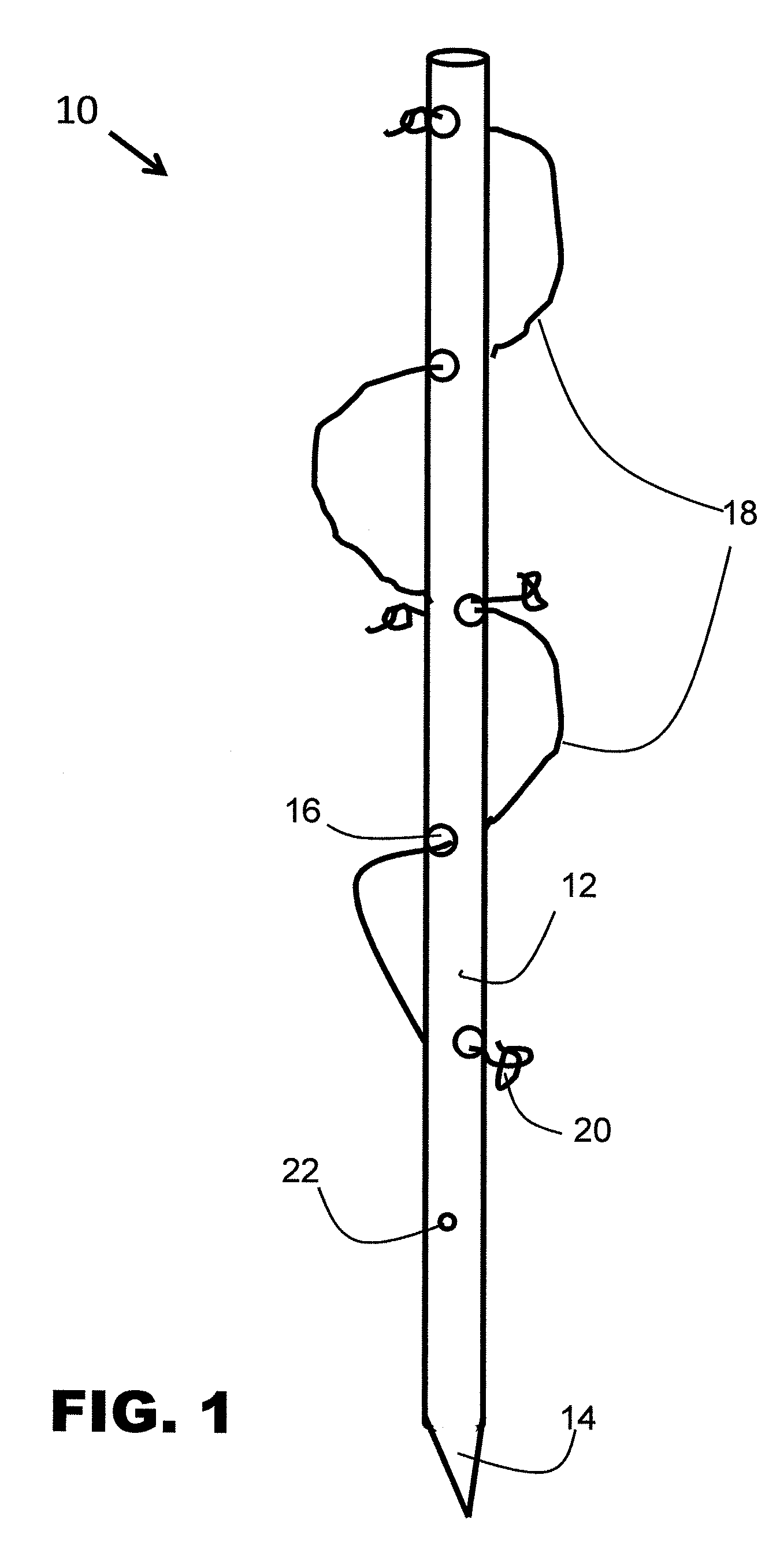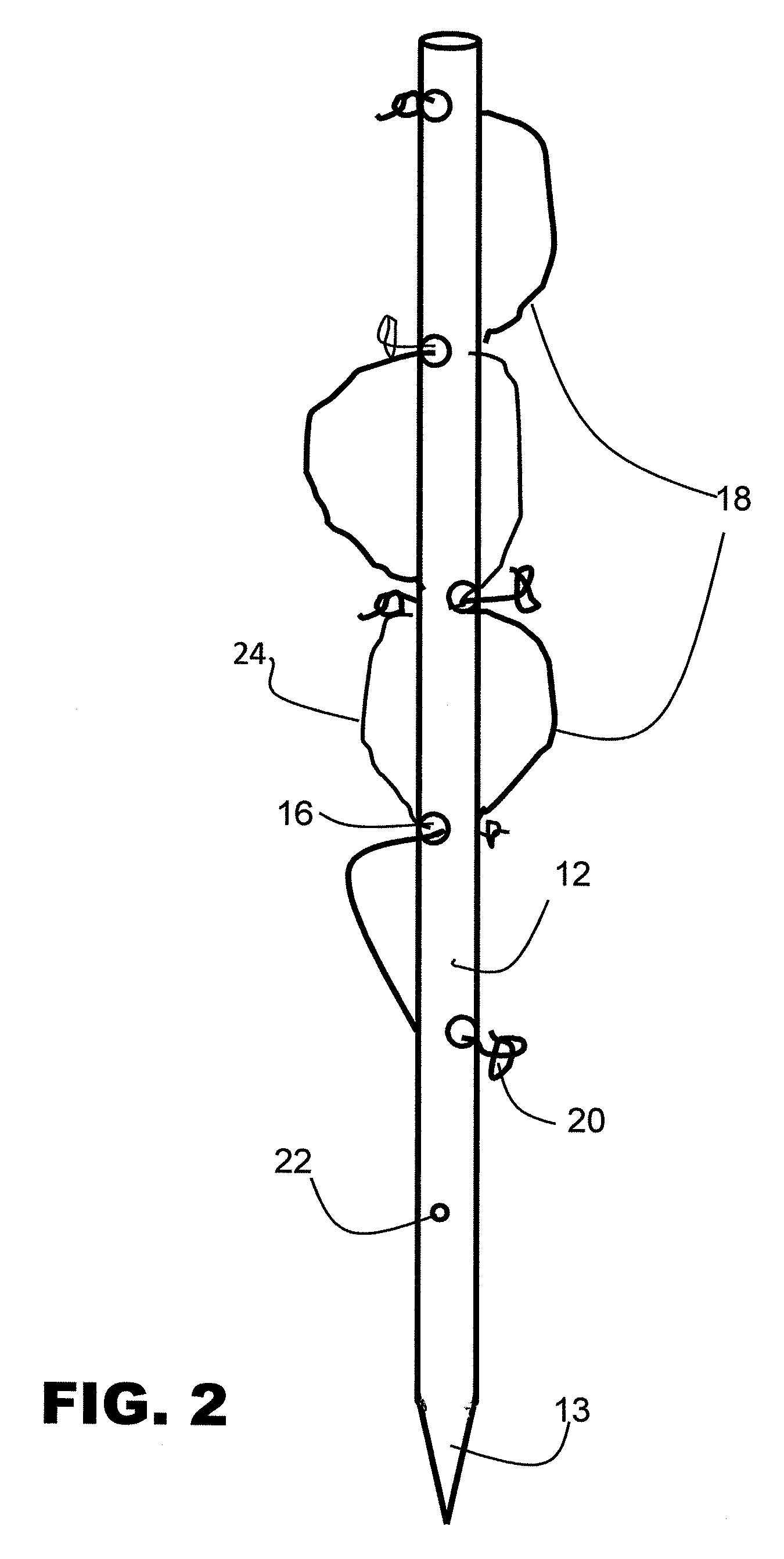Plant support pole and method of use
a technology for supporting poles and plants, applied in the field of plant support poles, can solve the problems of prone to rusting, prone to bending and rusting, and generally too short cages, and achieve the effect of convenient removal and storag
- Summary
- Abstract
- Description
- Claims
- Application Information
AI Technical Summary
Benefits of technology
Problems solved by technology
Method used
Image
Examples
Embodiment Construction
, particularly, when such description is taken in conjunction with the attached drawing figures and with the appended claims.
BRIEF DESCRIPTION OF THE DRAWINGS
[0022]FIG. 1 is an elevation perspective view of the present invention.
[0023]FIG. 2 presents an elevation perspective view of an alternative embodiment of the present invention.
[0024]FIG. 3 is an elevation view of a preferred extended embodiment of the present invention.
[0025]FIG. 4 provides perspective views of various means for securing the ends of the cord ties.
[0026]FIG. 5 provides an elevation view of the present invention with a plant illustrating support ways achievable with the present invention.
[0027]FIG. 6 presents an elevation perspective view of an alternative embodiment of the present invention.
[0028]FIG. 7 provides a detail elevation perspective view of an alternative embodiment of the present invention.
[0029]FIG. 8 provides a partial elevation perspective view of an alternative coupling means for the extension me...
PUM
 Login to View More
Login to View More Abstract
Description
Claims
Application Information
 Login to View More
Login to View More - R&D
- Intellectual Property
- Life Sciences
- Materials
- Tech Scout
- Unparalleled Data Quality
- Higher Quality Content
- 60% Fewer Hallucinations
Browse by: Latest US Patents, China's latest patents, Technical Efficacy Thesaurus, Application Domain, Technology Topic, Popular Technical Reports.
© 2025 PatSnap. All rights reserved.Legal|Privacy policy|Modern Slavery Act Transparency Statement|Sitemap|About US| Contact US: help@patsnap.com



